- Home
- Lawrence Block
In Sunlight or In Shadow
In Sunlight or In Shadow Read online
IN SUNLIGHT
OR IN SHADOW
STORIES INSPIRED BY THE PAINTINGS OF
EDWARD HOPPER
EDITED BY
LAWRENCE BLOCK
Cape Cod Morning
CONTENTS
FOREWORD: BEFORE WE BEGIN . . .
Lawrence Block
GIRLIE SHOW
Megan Abbott
THE STORY OF CAROLINE
Jill D. Block
SOIR BLEU
Robert Olen Butler
THE TRUTH ABOUT WHAT HAPPENED
Lee Child
ROOMS BY THE SEA
Nicholas Christopher
NIGHTHAWKS
Michael Connelly
THE INCIDENT OF 10 NOVEMBER
Jeffery Deaver
TAKING CARE OF BUSINESS
Craig Ferguson
THE MUSIC ROOM
Stephen King
THE PROJECTIONIST
Joe R. Lansdale
THE PREACHER COLLECTS
Gail Levin
OFFICE AT NIGHT
Warren Moore
THE WOMAN IN THE WINDOW
Joyce Carol Oates
STILL LIFE 1931
Kris Nelscott
NIGHT WINDOWS
Jonathan Santlofer
A WOMAN IN THE SUN
Justin Scott
AUTUMN AT THE AUTOMAT
Lawrence Block
PERMISSIONS
FOREWORD
BEFORE WE BEGIN . . .
Edward Hopper was born in Upper Nyack, New York, on July 22, 1882, and died in his studio near Washington Square in New York City on May 15, 1967. The life that filled those years is an interesting one, but it’s not up to me to recount it here; for that I’d steer you to Edward Hopper: An Intimate Biography, by Gail Levin.
(Gail, who also edited Hopper’s catalogue raisonné, is one of our contributors. Her offering, “The Preacher Collects,” renders as fiction an extraordinary little-known episode toward the end of the artist’s life, of which she has firsthand knowledge.)
But I digress, and probably not for the last time. Let me say a little about how the idea for this volume came about, and why such an illustrious list of contributors signed on for it.
Over the years I’ve written a lot about writing, and about the generation of ideas, so you’d think I’d be able to tell you the source of this particular idea. But I can’t. It was just there, premise and title and all, and without overthinking it I put together an A-list of the writers I’d most like to invite to the party.
Almost all of them said they’d love to come.
Not out of friendship (although they’re all friends of mine). Not for lack of other things to do, or because they hungered for the pittance I was able to offer. The attraction was Edward Hopper. They all loved and responded to his work, and in a very writerly way.
A strong positive response to Hopper’s paintings is by no means uncommon, in America and throughout the world. But I’ve come to believe that it’s singularly strong among readers and writers, that Hopper’s work resonates profoundly with those of us who care deeply for stories. Whether we delight in being told them or in telling them ourselves, we tend to be Edward Hopper fans.
And it’s not because of the stories his paintings tell.
Hopper was dismayed on those occasions when his work was dismissed as illustration. No less so than any Abstract Expressionist, his concern was with shape and color and light, not with meaning or narrative.
Hopper was neither an illustrator nor a narrative painter. His paintings don’t tell stories. What they do is suggest—powerfully, irresistibly—that there are stories within them, waiting to be told. He shows us a moment in time, arrayed on a canvas; there’s clearly a past and a future, but it’s our task to find it for ourselves.
Our contributors have done just that, and I’m gobsmacked by what they’ve provided. Thematic anthologies tend to generate stories that have rather too much in common with one another, and it’s often advisable to dip into them from time to time rather than read one story after another.
But that’s not the case here. These stories are in various genres, or no genre at all. Some of them spring directly from the canvas, making a story to fit the chosen painting. Others rebound at an oblique angle from the canvas, relating the story it somehow triggered. As far as I can make out, these stories have only two common denominators—their individual excellence and their source in Edward Hopper.
I think you’ll enjoy them. And, while you’re at it, you’ll get to look at some pretty pictures.
Including Cape Cod Morning, our frontispiece painting, for which you’ll note there is no corresponding story. And thereby hangs—or doesn’t hang—a tale.
Cape Cod Morning was the selection of a prominent writer and Hopper enthusiast who accepted an invitation to the anthology and subsequently found himself unable to deliver a story. These things happen, and no blame attaches when they do.
But it left us with a painting. We’d already chased down the requisite permission for Cape Cod Morning, and had tucked the high-res jpeg in the folder of Our Man at Pegasus—who pointed out, helpfully enough, that it seemed to be unaccompanied by a story.
I recounted the circumstances of our having it in hand. “Fine,” said Our Man. “It’s a beautiful painting, and we can use it as a frontispiece.”
“Ah,” I said. “But there’s no story to go with it.”
“So? Let them write their own.”
And so, Gentle Reader, we’ve provided you with an eighteenth painting, and isn’t it a compelling one? Have a look at it, take it in. There’s a story in it, don’t you think? A story just waiting to be told . . .
Feel free to tell it. But, um, don’t tell it to me. I’m outta here.
But not without jotting down a few words of thanks. To Edward Hopper, of course, and to the book’s contributors; without his paintings and their stories, all we’d have is some blank pages and a title.
To Shannah Ehrhart Clarke, who chased down and secured the artwork and the requisite permission to use it, and who performed this thankless task efficiently, resourcefully, and with unquenchable good humor.
To Danny Baror, my agent and friend, whose faith in and enthusiasm for this project never wavered.
To Claiborne Hancock of Pegasus Books, who was quick to see the book’s potential, and who—with Iris Blasi and Maria Fernandez—has been its passionate supporter throughout.
And, finally, to my wife, Lynne, who has been my passionate supporter for thirty-some years, and who knows just when to say, “You know, you’ve been at that computer forever. You must be exhausted. Why don’t you walk over to the Whitney and look at some pictures?”
—Lawrence Block
MEGAN ABBOTT is the Edgar Award-winning author of eight novels, including Dare Me, The Fever and her latest, You Will Know Me. Her stories have appeared in collections including Detroit Noir, Best American Mystery Stories of 2015, and Mississippi Noir. She is also the author of The Street Was Mine, a study of hardboiled fiction and film noir. She lives in Queens, NY.
The Girlie Show, 1941
32 × 38 in. (81.3 × 96.5 cm). Private collection/Bridgeman Images
GIRLIE SHOW
BY MEGAN ABBOTT
She went udders out.”
“No pasties even?”
“Like a pair of traffic lights.”
Pauline hears them on the porch. Bud is telling her husband about a trip to New York City a few years ago. Going to the Casino de Paree.
Her husband says almost nothing, smoking cigarette after cigarette and making sure Bud always has a Blatz in hand from the metal cooler beside him.
“Nipples like strawberries,” Bud
is saying. “But she never took off her g-string. And she never spread her legs.”
“That right?”
“Maybe you’ve seen things I ain’t.”
“Can’t say I know what you mean,” her husband says, flicking a match onto the lawn.
“Uh-huh.”
After, her husband comes inside, cheeks like dark flames.
The next day, she finds him in the kitchen, working, feet on the table.
It’s the first time he’s taken his sketch pad out in four months. Lately, he’s started giving Pauline black looks when she came home from work at the ad agency, especially the time she wore the new beaver hat the man from Schmitt’s Fine Furs had given her for all her hard work.
But now, he is sketching frantically, and she doesn’t say a word or stand too close. They’ve been married fourteen years and she knows all his frets and stops, wood warps and sweet spots.
“But it’s so cold,” she says. It’s been so long since he’s asked her she almost thinks it might be some kind of joke.
He needs a model.
“Stand by the stove,” he says, rolling his shirtsleeves above his elbows. That angry vein in his forearm.
She moves over to the cookstove, its frill of heat.
The memory comes back to her, nearly fifteen years before. The coldest January she’d known. Cuddling up to the potbelly stove at the train station, she felt something pressing against her back. Turning, she saw a man behind her, hands deep in his coat pockets, red-cheeked.
She could smell Sen-Sen on his breath and the Macassar oil he used in his hair.
She was startled, but he was so handsome and she was twenty-seven, the only girl from her town without a husband.
They were married three months later.
My masher, she used to call him, affectionately, a very long time ago.
Sketch pad on his knees, he waits as Pauline pulls loose her housedress, unrolls her stockings.
The last is her underdrawers, which shiver to her feet.
“You’ll see all the things I don’t want you to see,” she whispers, throatily. She doesn’t know where this voice comes from.
Wifely duties, married intimacies have never been easy for her. Everything came as a great shock on her wedding night, even though she’d read Ideal Marriage: Physiology and Technique, the book given to her by her maid of honor, who’d already been married eighteen months and, as she whispered over creamed coffee at the luncheonette, was now “looser than a wagon tire” down there.
Pauline hadn’t gotten as far in the book as she should have, or her Latin wasn’t good enough, because it turned out the thing her new husband liked to do most was more than two hundred pages in, and the movements required, and the sounds he made, she could not find in the book at all.
The parts she liked were the accidental moments, often things she felt almost by accident while he was moving her, hands on her shoulders so rough she had marks like blue petals, and they recalled certain private moments when the subway train braked suddenly, coming to a long, shuddery stop.
Everything is off now, dress, stockings, slip, brassiere, step-ins, and she is standing on the kitchen stool. She wonders if a very tall man might be able to see her through the pane above the kitchen curtains.
“Turn to your right.”
She can feel the gooseflesh rise, the veins behind her knees like tickling spiders now.
She is forty-two and no one has asked her to take off her clothes in a long time. (How about lunch, Mr. Schmitt said every time he called now. I’d love to see that beaver on you.)
As she turns, she lifts her breasts, which she’s always been proud of. No puling babies have ever hung from them and they have never fallen like a pair of yeast cakes, as some of the other women she knew confided. Once, Mrs. Bertrand, the head of the switchboard at the office, asked if she could touch Pauline’s breasts, just to remind myself.
Catching a glimpse of herself in the chrome toaster, she smiles a little, but only to herself.
He makes her take many different poses, her arms high and twined like Marlene Dietrich, her legs apart, a boxer’s stance. Hand on hip, like a department store model, and knees bent; hands on hips, like a momma saying kootchie koo to a baby in a stroller.
“What is this for?” she finally asks, her back aching, her body tingling head to toe. “Am I dancer or something?”
“You’re not anything,” he says, coolly. “But the painting will be called the ‘Irish Venus.’”
She used to pose for him the first few years they were married, but only for his pay-work. She posed as an aproned housewife (Romance dies at the sight of dishpan hands!), a bathing beauty (Ten more pounds changed my life. A skinny girl hasn’t a chance!), a June bride, a beer hall girl in lederhosen. Eventually, once she started bringing in regular pay at the ad agency, where she drew herself all day (rows and rows of women’s shoes, or men’s hats, or children’s pajamas), he suggested he start hiring girls from the art school, but she resisted.
“Don’t be so jealous,” he would say.
“It’s the only time we spend together,” Pauline insisted, gently.
But then one time, she came home late from work, soon after her promotion.
The canvas on his easel was torn in half and he was gone to McCrory’s till four. When he finally returned, knocking over the milk bottles on the front step, he did some nasty things under their covers that she was required to be part of. She had to go to a doctor the next day and have some stiches put inside. Pushing through the train turnstile made her cry in pain.
He swore he didn’t remember any of it, but the following week, he hired a girl from the art school. She had buck teeth, but he said it worked out because she always kept her mouth shut.
That night, he sketches her until nearly two.
When she comes out of the bathroom after washing her teeth, she sees him asleep on the bed, his shoes still on. Most nights, he sleeps on the sunporch.
She unlaces his shoes and removes them quietly, along with his socks.
At some point in the night, he must have taken off his trousers because just before the pink of dawn she feels his bare leg against her back.
“Honey,” she whispers.
He moves closer to her in the bed, the mattress springs making embarrassing sounds. She turns slowly so she is facing him, but he turns away. She can feel it, even though her eyes are closed.
The next night, he asks her to do it again. He’s ready to move onto paint. He has everything ready by the time she gets home, paints mixed and a newly stretched canvas on the easel.
Her legs still ache from the night before, and from working all day, but she feels some excitement in her chest, like a pair of gypsy moths dancing.
She warms coffee on the stove and slides the stool back into place, under the fly-specked tungsten lamp hanging from the ceiling.
He sketches her for hours that night, her body aching, feet numb in her work heels, the smell of turpentine and linseed oil so strong in the air.
He is so caught up, a furrow from his browline to chin.
He has caught fire.
“Can you just move that way?” he says, paint-streaked thumb jabbing.
It is even colder tonight, the sixth night in a row since he began painting. She’s burned her hip once and her thigh twice on the cookstove as she swiveled, teetering on her heels, the stool squeaking.
The first time, her fingers fly to her mouth like a little girl in a cartoon, or one of those women on the calendars that hang at Al’s Garage, the ones whose skirts are always flying up, flashing garters like black arrows.
He looks at her from over the top of the easel but doesn’t say anything.
Late, late, her body aching, he suggests they end the session with a glass of Old Schenley’s. Pauline isn’t much of a drinker, but she thinks it might help with the pain.
He takes her feet and puts them on his lap. At first she doesn’t know what he’s doing, but then he reaches for an ic
e cube and rests it on her thigh, the two angry burns like open mouths.
Even later, in bed that night, she feels something. His fingers touching the grooves of the burn, fingers cold from the icy pitcher on the bedside table. And then the fingers trace circles that go wider and wider toward her inner thigh, to the center of things. She feels her lips part, a breath. The fingers move closer and closer, so slow.
In that moment, a picture flashes through her head, out of nowhere and it makes no sense: a sloe-eyed woman the next lane over at the bowling alley years ago, arm outstretched to hand Pauline a bright red ball, the woman’s long fingers dipping into its holes. I warmed it up for you.
The next day, she leaves work early, a sneaking smile on her face. Won’t he be happy, she thinks. We can start early. We can work all evening.
When she walks into the kitchen, just after four, she finds a box on the dropleaf table. Her smile grows wider as she lifts the cardboard top and parts the tissue inside. It is a pair of green slippers with tiny gold heels. Pressing one up to her face, it almost feels like satin, though she knows it can’t be. The card inside describes the color as absinthe.
They are two sizes too small, but she won’t say a word.
“You,” she says, when he comes home, kissing his cheek, “you.” She has made him his favorite beef stew with plenty of Worcestershire.
He gives her a strange look, so she points down to her feet, tapping her heels together like Dorothy.
There’s a catch of surprise on his face. Maybe he’d wanted to spring them on her after she took her clothes off, she thinks, blushing to herself.
He wants to stop early that night. He keeps looking at her in the slippers. Eventually, he asks her to put her work shoes back on.
“The arch is better,” he says. “That’s what I’m saying.”
He tries for a while, but it’s not working.
He says the red is wrong. That he has to mix again, or go to the store tomorrow, or could she bring home a vermillion from work.
Then, he pulls on his flannel jacket and says he’s ducking out with the boys to “talk business,” which means shooting craps behind the butcher shop.

 Tanner on Ice
Tanner on Ice Hit Me
Hit Me Hit and Run
Hit and Run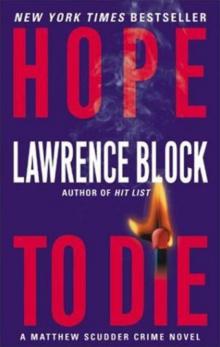 Hope to Die
Hope to Die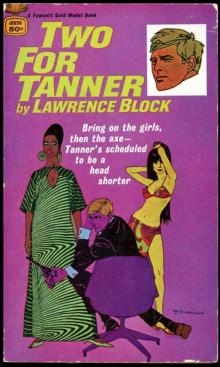 Two For Tanner
Two For Tanner Tanners Virgin
Tanners Virgin Dead Girl Blues
Dead Girl Blues One Night Stands and Lost Weekends
One Night Stands and Lost Weekends A Drop of the Hard Stuff
A Drop of the Hard Stuff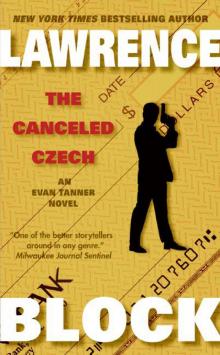 The Canceled Czech
The Canceled Czech Even the Wicked
Even the Wicked Me Tanner, You Jane
Me Tanner, You Jane Quotidian Keller
Quotidian Keller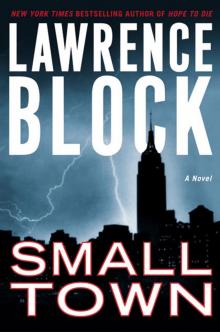 Small Town
Small Town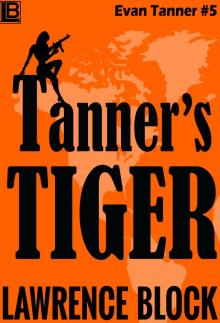 Tanners Tiger
Tanners Tiger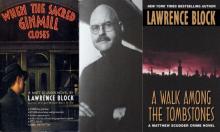 A Walk Among the Tombstones
A Walk Among the Tombstones Tanners Twelve Swingers
Tanners Twelve Swingers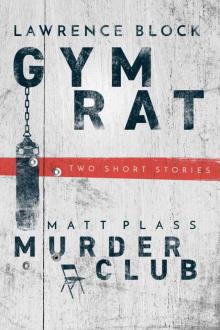 Gym Rat & the Murder Club
Gym Rat & the Murder Club Everybody Dies
Everybody Dies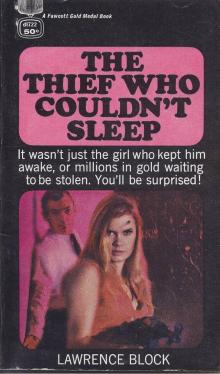 The Thief Who Couldnt Sleep
The Thief Who Couldnt Sleep Hit Parade
Hit Parade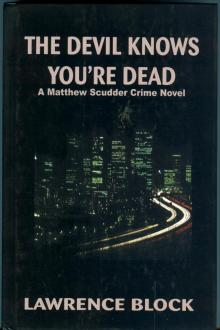 The Devil Knows Youre Dead
The Devil Knows Youre Dead The Burglar in Short Order
The Burglar in Short Order A Long Line of Dead Men
A Long Line of Dead Men Keller's Homecoming
Keller's Homecoming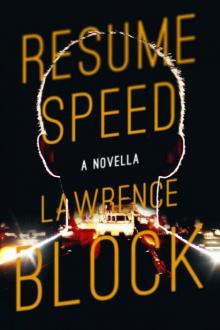 Resume Speed
Resume Speed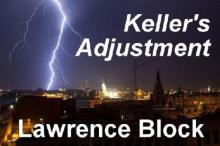 Keller's Adjustment
Keller's Adjustment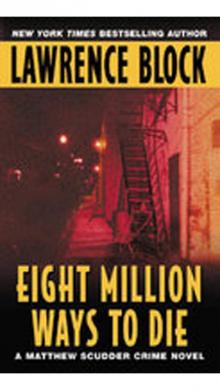 Eight Million Ways to Die
Eight Million Ways to Die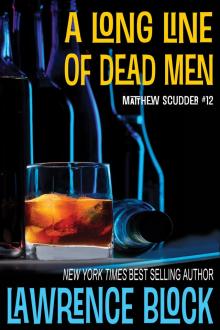 Time to Murder and Create
Time to Murder and Create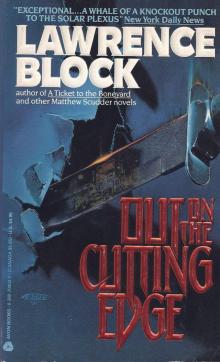 Out on the Cutting Edge
Out on the Cutting Edge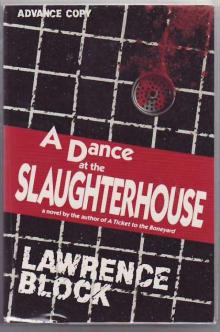 A Dance at the Slaughter House
A Dance at the Slaughter House In the Midst of Death
In the Midst of Death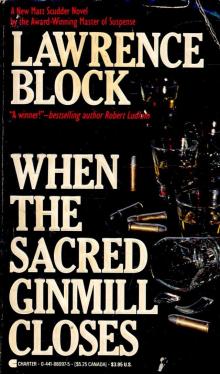 When the Sacred Ginmill Closes
When the Sacred Ginmill Closes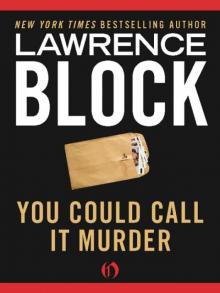 You Could Call It Murder
You Could Call It Murder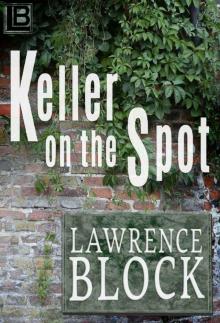 Keller on the Spot
Keller on the Spot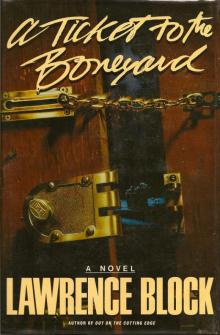 A Ticket to the Boneyard
A Ticket to the Boneyard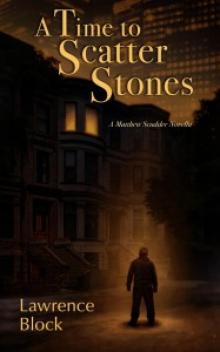 A Time to Scatter Stones
A Time to Scatter Stones Keller's Designated Hitter
Keller's Designated Hitter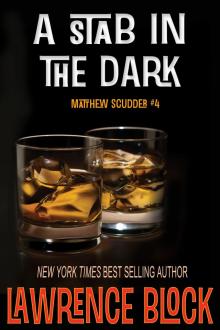 A Stab in the Dark
A Stab in the Dark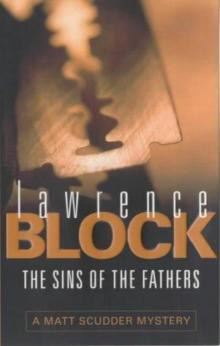 Sins of the Fathers
Sins of the Fathers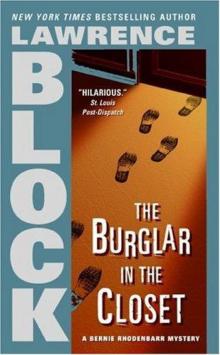 The Burglar in the Closet
The Burglar in the Closet Burglar Who Dropped In On Elvis
Burglar Who Dropped In On Elvis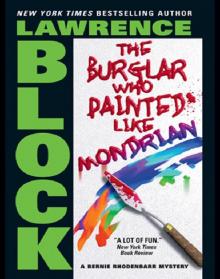 The Burglar Who Painted Like Mondrian
The Burglar Who Painted Like Mondrian The Girl With the Long Green Heart
The Girl With the Long Green Heart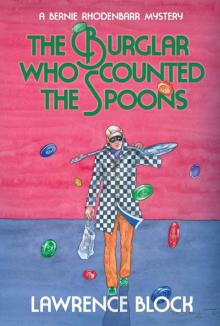 The Burglar Who Counted the Spoons (Bernie Rhodenbarr)
The Burglar Who Counted the Spoons (Bernie Rhodenbarr) Burglar Who Smelled Smoke
Burglar Who Smelled Smoke Rude Awakening (Kit Tolliver #2) (The Kit Tolliver Stories)
Rude Awakening (Kit Tolliver #2) (The Kit Tolliver Stories) Don't Get in the Car (Kit Tolliver #9) (The Kit Tolliver Stories)
Don't Get in the Car (Kit Tolliver #9) (The Kit Tolliver Stories) CH04 - The Topless Tulip Caper
CH04 - The Topless Tulip Caper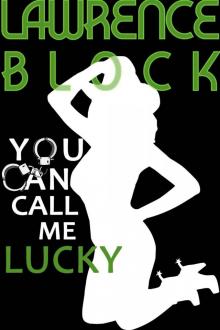 You Can Call Me Lucky (Kit Tolliver #3) (The Kit Tolliver Stories)
You Can Call Me Lucky (Kit Tolliver #3) (The Kit Tolliver Stories) CH02 - Chip Harrison Scores Again
CH02 - Chip Harrison Scores Again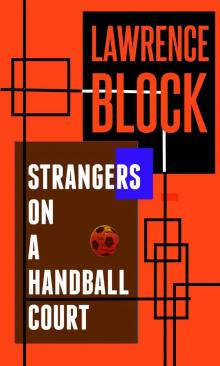 Strangers on a Handball Court
Strangers on a Handball Court Cleveland in My Dreams
Cleveland in My Dreams Clean Slate (Kit Tolliver #4) (The Kit Tolliver Stories)
Clean Slate (Kit Tolliver #4) (The Kit Tolliver Stories)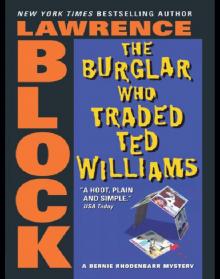 The Burglar Who Traded Ted Williams
The Burglar Who Traded Ted Williams Burglar on the Prowl
Burglar on the Prowl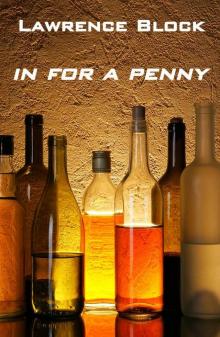 In For a Penny (A Story From the Dark Side)
In For a Penny (A Story From the Dark Side)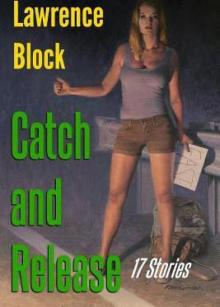 Catch and Release Paperback
Catch and Release Paperback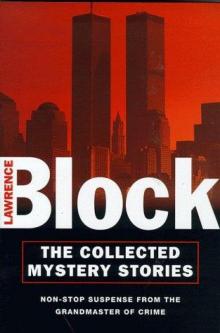 Ride A White Horse
Ride A White Horse No Score
No Score Looking for David (A Matthew Scudder Story Book 7)
Looking for David (A Matthew Scudder Story Book 7)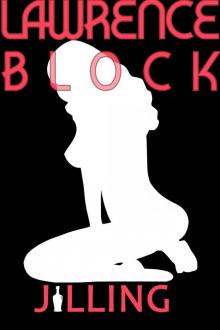 Jilling (Kit Tolliver #6) (The Kit Tolliver Stories)
Jilling (Kit Tolliver #6) (The Kit Tolliver Stories)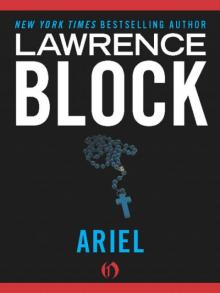 Ariel
Ariel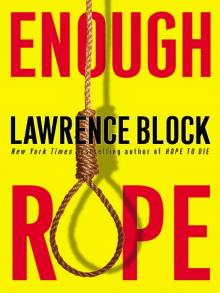 Enough Rope
Enough Rope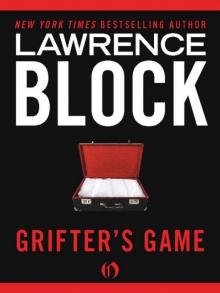 Grifter's Game
Grifter's Game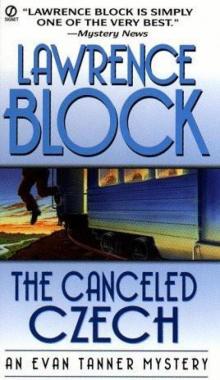 Canceled Czech
Canceled Czech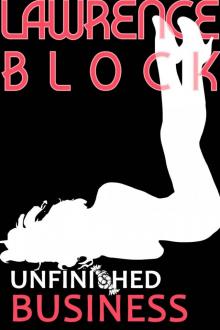 Unfinished Business (Kit Tolliver #12) (The Kit Tolliver Stories)
Unfinished Business (Kit Tolliver #12) (The Kit Tolliver Stories) Thirty
Thirty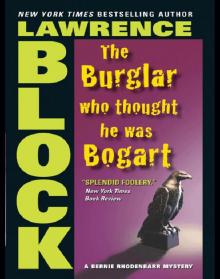 The Burglar Who Thought He Was Bogart
The Burglar Who Thought He Was Bogart Make Out with Murder
Make Out with Murder One Last Night at Grogan's (A Matthew Scudder Story Book 11)
One Last Night at Grogan's (A Matthew Scudder Story Book 11) The Burglar on the Prowl
The Burglar on the Prowl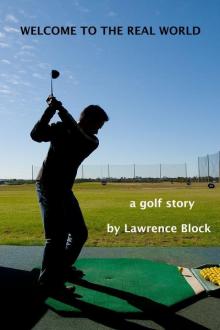 Welcome to the Real World (A Story From the Dark Side)
Welcome to the Real World (A Story From the Dark Side)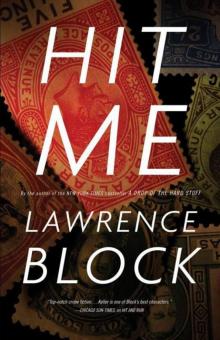 Keller 05 - Hit Me
Keller 05 - Hit Me Walk Among the Tombstones: A Matthew Scudder Crime Novel
Walk Among the Tombstones: A Matthew Scudder Crime Novel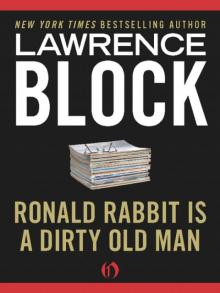 Ronald Rabbit Is a Dirty Old Man
Ronald Rabbit Is a Dirty Old Man The Burglar Who Studied Spinoza
The Burglar Who Studied Spinoza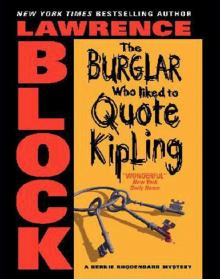 The Burglar Who Liked to Quote Kipling
The Burglar Who Liked to Quote Kipling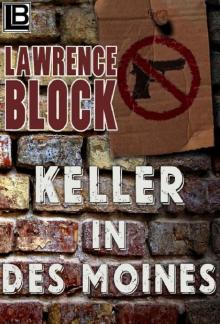 Keller in Des Moines
Keller in Des Moines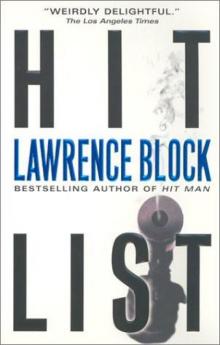 Hit List
Hit List The Dettweiler Solution
The Dettweiler Solution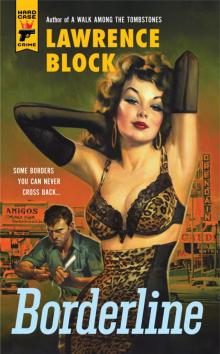 HCC 115 - Borderline
HCC 115 - Borderline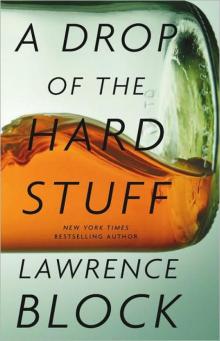 A Drop of the Hard Stuff: A Matthew Scudder Novel
A Drop of the Hard Stuff: A Matthew Scudder Novel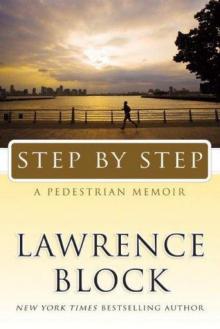 Step by Step
Step by Step The Girl With the Deep Blue Eyes
The Girl With the Deep Blue Eyes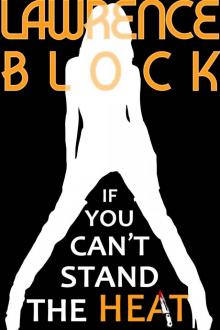 If You Can't Stand the Heat (Kit Tolliver #1) (The Kit Tolliver Stories)
If You Can't Stand the Heat (Kit Tolliver #1) (The Kit Tolliver Stories)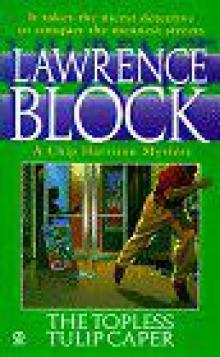 The Topless Tulip Caper
The Topless Tulip Caper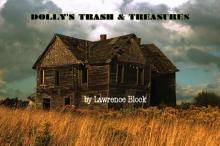 Dolly's Trash & Treasures (A Story From the Dark Side)
Dolly's Trash & Treasures (A Story From the Dark Side) The Triumph of Evil
The Triumph of Evil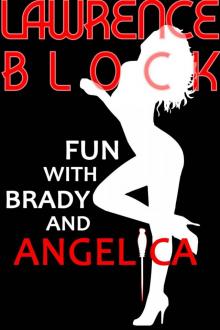 Fun with Brady and Angelica (Kit Tolliver #10 (The Kit Tolliver Stories)
Fun with Brady and Angelica (Kit Tolliver #10 (The Kit Tolliver Stories) Burglars Can't Be Choosers
Burglars Can't Be Choosers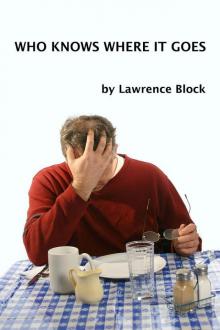 Who Knows Where It Goes (A Story From the Dark Side)
Who Knows Where It Goes (A Story From the Dark Side) Deadly Honeymoon
Deadly Honeymoon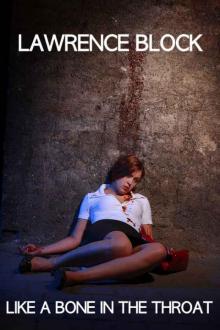 Like a Bone in the Throat (A Story From the Dark Side)
Like a Bone in the Throat (A Story From the Dark Side)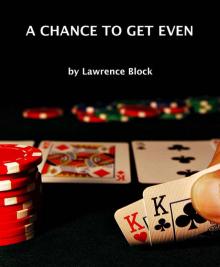 A Chance to Get Even (A Story From the Dark Side)
A Chance to Get Even (A Story From the Dark Side) The Boy Who Disappeared Clouds
The Boy Who Disappeared Clouds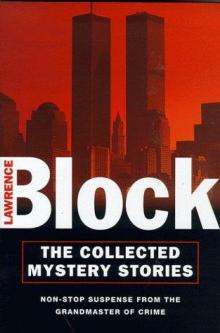 Collecting Ackermans
Collecting Ackermans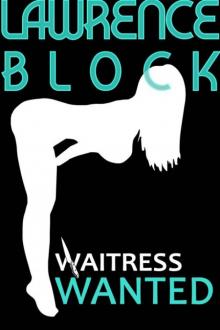 Waitress Wanted (Kit Tolliver #5) (The Kit Tolliver Stories)
Waitress Wanted (Kit Tolliver #5) (The Kit Tolliver Stories) One Thousand Dollars a Word
One Thousand Dollars a Word Even the Wicked: A Matthew Scudder Novel (Matthew Scudder Mysteries)
Even the Wicked: A Matthew Scudder Novel (Matthew Scudder Mysteries)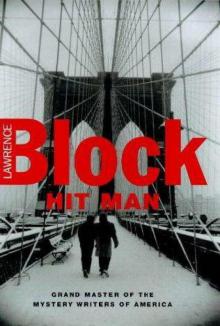 Hit Man
Hit Man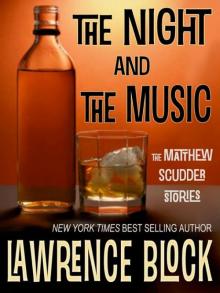 The Night and The Music
The Night and The Music Ehrengraf for the Defense
Ehrengraf for the Defense The Merciful Angel of Death (A Matthew Scudder Story Book 5)
The Merciful Angel of Death (A Matthew Scudder Story Book 5) The Burglar in the Rye
The Burglar in the Rye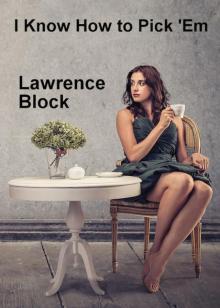 I Know How to Pick 'Em
I Know How to Pick 'Em Getting Off hcc-69
Getting Off hcc-69 Three in the Side Pocket (A Story From the Dark Side)
Three in the Side Pocket (A Story From the Dark Side)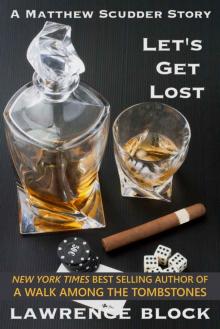 Let's Get Lost (A Matthew Scudder Story Book 8)
Let's Get Lost (A Matthew Scudder Story Book 8)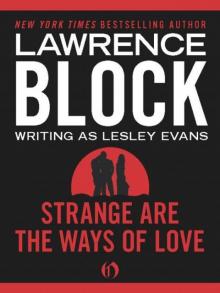 Strange Are the Ways of Love
Strange Are the Ways of Love MOSTLY MURDER: Till Death: a mystery anthology
MOSTLY MURDER: Till Death: a mystery anthology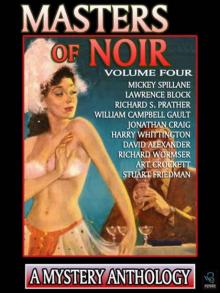 Masters of Noir: Volume Four
Masters of Noir: Volume Four A Week as Andrea Benstock
A Week as Andrea Benstock Scenarios (A Stoiry From the Dark Side)
Scenarios (A Stoiry From the Dark Side)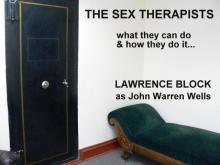 The Sex Therapists: What They Can Do and How They Do It (John Warren Wells on Sexual Behavior Book 15)
The Sex Therapists: What They Can Do and How They Do It (John Warren Wells on Sexual Behavior Book 15)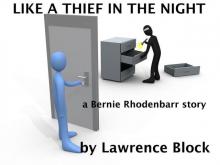 Like a Thief in the Night: a Bernie Rhodenbarr story
Like a Thief in the Night: a Bernie Rhodenbarr story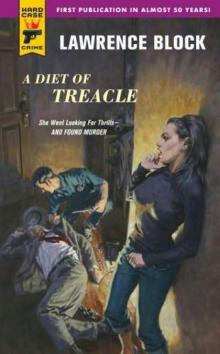 A Diet of Treacle
A Diet of Treacle Community of Women
Community of Women Different Strokes: How I (Gulp!) Wrote, Directed, and Starred in an X-rated Movie (John Warren Wells on Sexual Behavior)
Different Strokes: How I (Gulp!) Wrote, Directed, and Starred in an X-rated Movie (John Warren Wells on Sexual Behavior) You Don't Even Feel It (A Story From the Dark Side)
You Don't Even Feel It (A Story From the Dark Side)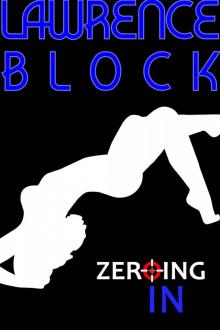 Zeroing In (Kit Tolliver #11) (The Kit Tolliver Stories)
Zeroing In (Kit Tolliver #11) (The Kit Tolliver Stories) The Wife-Swap Report (John Warren Wells on Sexual Behavior)
The Wife-Swap Report (John Warren Wells on Sexual Behavior)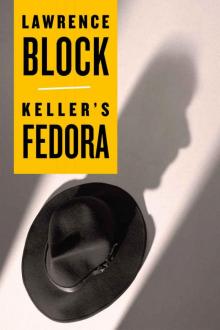 Keller's Fedora (Kindle Single)
Keller's Fedora (Kindle Single)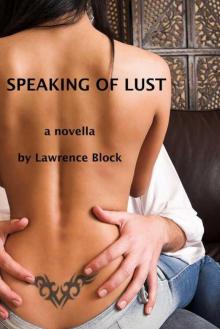 Speaking of Lust
Speaking of Lust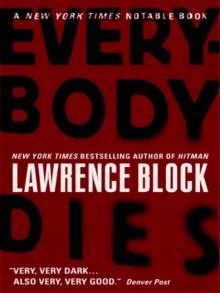 Everybody Dies (Matthew Scudder)
Everybody Dies (Matthew Scudder) Defender of the Innocent: The Casebook of Martin Ehrengraf
Defender of the Innocent: The Casebook of Martin Ehrengraf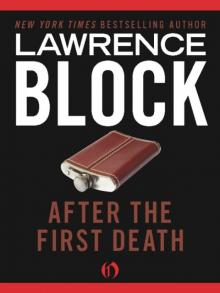 After the First Death
After the First Death Writing the Novel
Writing the Novel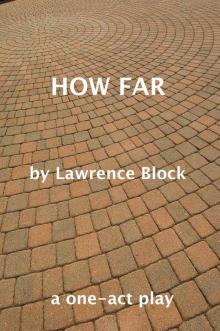 How Far - a one-act stage play
How Far - a one-act stage play Chip Harrison Scores Again
Chip Harrison Scores Again The Topless Tulip Caper ch-4
The Topless Tulip Caper ch-4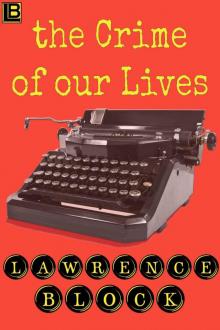 The Crime of Our Lives
The Crime of Our Lives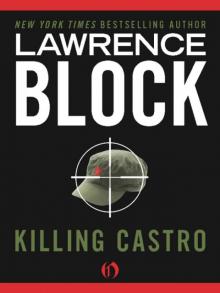 Killing Castro
Killing Castro The Trouble with Eden
The Trouble with Eden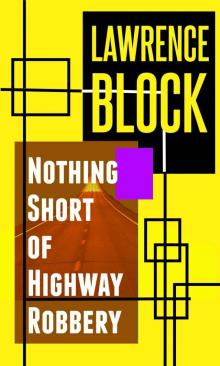 Nothing Short of Highway Robbery
Nothing Short of Highway Robbery Sin Hellcat
Sin Hellcat Getting Off: A Novel of Sex & Violence (Hard Case Crime)
Getting Off: A Novel of Sex & Violence (Hard Case Crime) Coward's Kiss
Coward's Kiss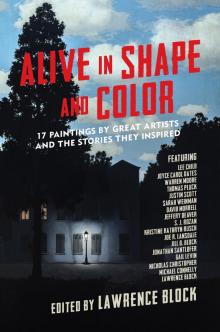 Alive in Shape and Color
Alive in Shape and Color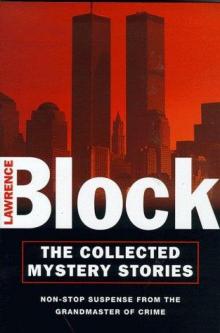 Blow for Freedom
Blow for Freedom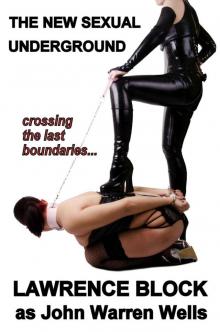 The New Sexual Underground: Crossing the Last Boundaries (John Warren Wells on Sexual Behavior Book 10)
The New Sexual Underground: Crossing the Last Boundaries (John Warren Wells on Sexual Behavior Book 10)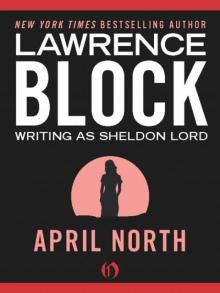 April North
April North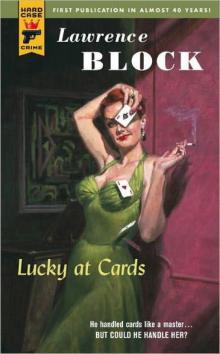 Lucky at Cards
Lucky at Cards One Night Stands; Lost weekends
One Night Stands; Lost weekends Sweet Little Hands (A Story From the Dark Side)
Sweet Little Hands (A Story From the Dark Side) Blood on Their Hands
Blood on Their Hands A Dance at the Slaughterhouse
A Dance at the Slaughterhouse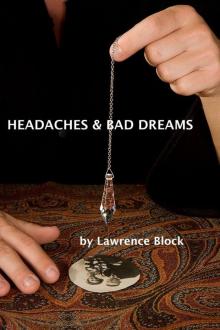 Headaches and Bad Dreams (A Story From the Dark Side)
Headaches and Bad Dreams (A Story From the Dark Side) Keller's Therapy
Keller's Therapy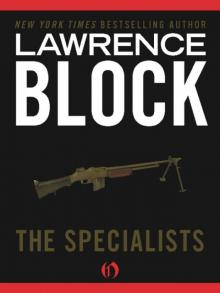 The Specialists
The Specialists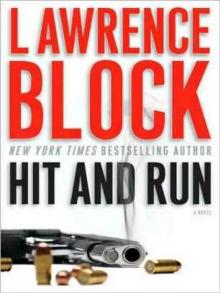 Hit and Run jk-4
Hit and Run jk-4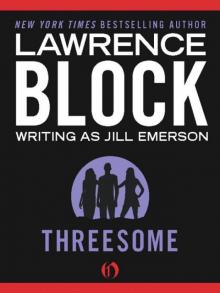 Threesome
Threesome Love at a Tender Age (John Warren Wells on Sexual Behavior)
Love at a Tender Age (John Warren Wells on Sexual Behavior) The Devil Knows You're Dead: A MATTHEW SCUDDER CRIME NOVEL
The Devil Knows You're Dead: A MATTHEW SCUDDER CRIME NOVEL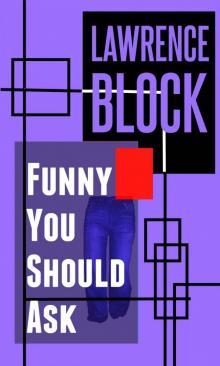 Funny You Should Ask
Funny You Should Ask CH01 - No Score
CH01 - No Score Sex and the Stewardess (John Warren Wells on Sexual Behavior)
Sex and the Stewardess (John Warren Wells on Sexual Behavior)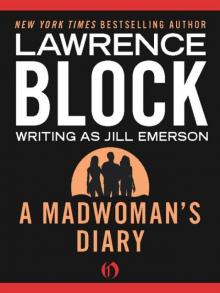 A Madwoman's Diary
A Madwoman's Diary When This Man Dies
When This Man Dies Sinner Man
Sinner Man Such Men Are Dangerous
Such Men Are Dangerous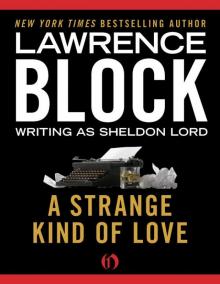 A Strange Kind of Love
A Strange Kind of Love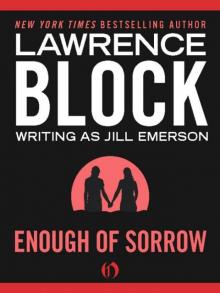 Enough of Sorrow
Enough of Sorrow 69 Barrow Street
69 Barrow Street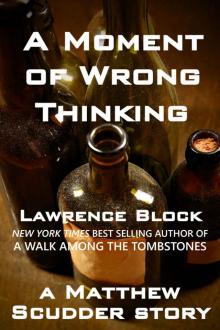 A Moment of Wrong Thinking (Matthew Scudder Mysteries Series Book 9)
A Moment of Wrong Thinking (Matthew Scudder Mysteries Series Book 9) Eight Million Ways to Die ms-5
Eight Million Ways to Die ms-5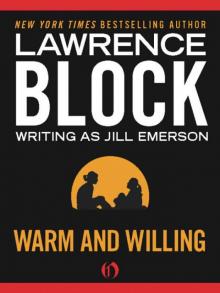 Warm and Willing
Warm and Willing Mona
Mona In Sunlight or In Shadow
In Sunlight or In Shadow A Candle for the Bag Lady (Matthew Scudder Book 2)
A Candle for the Bag Lady (Matthew Scudder Book 2) Conjugal Rites (Kit Tolliver #7) (The Kit Tolliver Stories)
Conjugal Rites (Kit Tolliver #7) (The Kit Tolliver Stories) Speaking of Lust - the novella
Speaking of Lust - the novella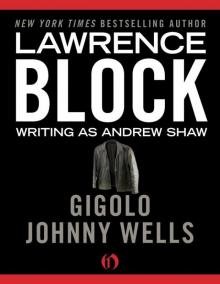 Gigolo Johnny Wells
Gigolo Johnny Wells Dark City Lights
Dark City Lights Versatile Ladies: the bisexual option (John Warren Wells on Sexual Behavior)
Versatile Ladies: the bisexual option (John Warren Wells on Sexual Behavior)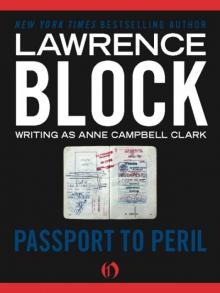 Passport to Peril
Passport to Peril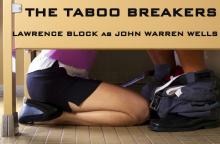 The Taboo Breakers: Shock Troops of the Sexual Revolution (John Warren Wells on Sexual Behavior)
The Taboo Breakers: Shock Troops of the Sexual Revolution (John Warren Wells on Sexual Behavior)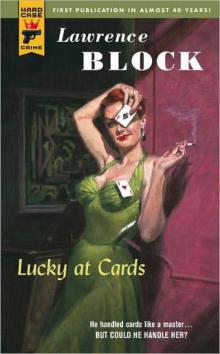 Lucky at Cards hcc-28
Lucky at Cards hcc-28 Campus Tramp
Campus Tramp 3 is Not a Crowd (John Warren Wells on Sexual Behavior)
3 is Not a Crowd (John Warren Wells on Sexual Behavior) Manhattan Noir
Manhattan Noir The Burglar in the Library
The Burglar in the Library Doing It! - Going Beyond the Sexual Revolution (John Warren Wells on Sexual Behavior Book 13)
Doing It! - Going Beyond the Sexual Revolution (John Warren Wells on Sexual Behavior Book 13)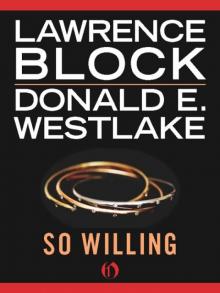 So Willing
So Willing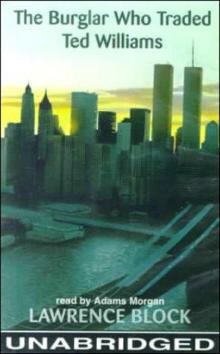 The Burglar Who Traded Ted Williams br-6
The Burglar Who Traded Ted Williams br-6 Candy
Candy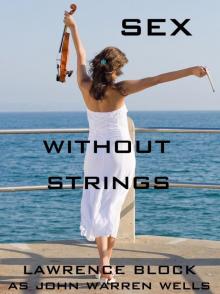 Sex Without Strings: A Handbook for Consenting Adults (John Warren Wells on Sexual Behavior)
Sex Without Strings: A Handbook for Consenting Adults (John Warren Wells on Sexual Behavior)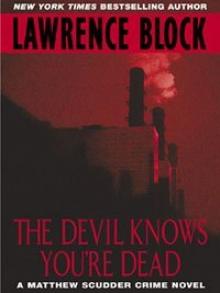 The Devil Knows You're Dead: A MATTHEW SCUDDER CRIME NOVEL (Matthew Scudder Mysteries)
The Devil Knows You're Dead: A MATTHEW SCUDDER CRIME NOVEL (Matthew Scudder Mysteries) Manhattan Noir 2
Manhattan Noir 2 The Scoreless Thai (aka Two For Tanner)
The Scoreless Thai (aka Two For Tanner)